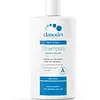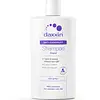What's inside
What's inside
 Benefits
Benefits

No benefits
 Concerns
Concerns

 Ingredients Side-by-side
Ingredients Side-by-side

Water
Skin ConditioningDisodium Laureth Sulfosuccinate
CleansingLauryl Glucoside
CleansingDisodium Undecylenamido Mea-Sulfosuccinate
CleansingPEG-7 Glyceryl Cocoate
EmulsifyingGuar Hydroxypropyltrimonium Chloride
Skin ConditioningLactitol
HumectantXylitol
HumectantGlycerin
HumectantPiroctone Olamine
PreservativeGlycol Distearate
EmollientHydrolyzed Vegetable Protein Pg-Propyl Silanetriol
Skin ConditioningPhenoxyethanol
PreservativeParfum
MaskingLaureth-4
EmulsifyingCitric Acid
BufferingPotassium Sorbate
PreservativeCocamidopropyl Betaine
CleansingSodium Chloride
MaskingFormic Acid
PreservativeDisodium EDTA
EDTA
Water, Disodium Laureth Sulfosuccinate, Lauryl Glucoside, Disodium Undecylenamido Mea-Sulfosuccinate, PEG-7 Glyceryl Cocoate, Guar Hydroxypropyltrimonium Chloride, Lactitol, Xylitol, Glycerin, Piroctone Olamine, Glycol Distearate, Hydrolyzed Vegetable Protein Pg-Propyl Silanetriol, Phenoxyethanol, Parfum, Laureth-4, Citric Acid, Potassium Sorbate, Cocamidopropyl Betaine, Sodium Chloride, Formic Acid, Disodium EDTA, EDTA
Water
Skin ConditioningDisodium Laureth Sulfosuccinate
CleansingLauryl Glucoside
CleansingDisodium Undecylenamido Mea-Sulfosuccinate
CleansingPEG-7 Glyceryl Cocoate
EmulsifyingGlycol Distearate
EmollientGuar Hydroxypropyltrimonium Chloride
Skin ConditioningPiroctone Olamine
PreservativeCocamidopropyl Betaine
CleansingLaureth-4
EmulsifyingSodium Chloride
MaskingCitric Acid
BufferingPhenoxyethanol
PreservativePotassium Sorbate
PreservativeFormic Acid
PreservativeWater, Disodium Laureth Sulfosuccinate, Lauryl Glucoside, Disodium Undecylenamido Mea-Sulfosuccinate, PEG-7 Glyceryl Cocoate, Glycol Distearate, Guar Hydroxypropyltrimonium Chloride, Piroctone Olamine, Cocamidopropyl Betaine, Laureth-4, Sodium Chloride, Citric Acid, Phenoxyethanol, Potassium Sorbate, Formic Acid
Ingredients Explained
These ingredients are found in both products.
Ingredients higher up in an ingredient list are typically present in a larger amount.
Citric Acid is an alpha hydroxy acid (AHA) naturally found in citrus fruits like oranges, lemons, and limes.
Like other AHAs, citric acid can exfoliate skin by breaking down the bonds that hold dead skin cells together. This helps reveal smoother and brighter skin underneath.
However, this exfoliating effect only happens at high concentrations (20%) which can be hard to find in cosmetic products.
Due to this, citric acid is usually included in small amounts as a pH adjuster. This helps keep products slightly more acidic and compatible with skin's natural pH.
In skincare formulas, citric acid can:
While it can provide some skin benefits, research shows lactic acid and glycolic acid are generally more effective and less irritating exfoliants.
Most citric acid used in skincare today is made by fermenting sugars (usually from molasses). This synthetic version is identical to the natural citrus form but easier to stabilize and use in formulations.
Read more about some other popular AHA's here:
Learn more about Citric AcidCocamidopropyl Betaine is a fatty acid created by mixing similar compounds in coconut oil and dimethylaminopropylamine, a compound with two amino groups.
This ingredient is a surfactant and cleanser. It helps gather the dirt, pollutants, and other impurities in your skin to be washed away. It also helps thicken a product and make the texture more creamy.
Being created from coconut oil means Cocamidopropyl Betaine is hydrating for the skin.
While Cocamidopropyl Betaine was believed to be an allergen, a study from 2012 disproved this. It found two compounds in unpure Cocamidopropyl Betaine to be the irritants: aminoamide and 3-dimethylaminopropylamine. High-grade and pure Cocamidopropyl Betaine did not induce allergic reactions during this study.
Learn more about Cocamidopropyl BetaineThis ingredient is a cleansing agent, surfactant, and foam booster. It considered an alternative to traditional sulfates (Sulfosuccinate) and is allowed in "sulfate-free" products.
According to a manufacturer, this ingredient is mild and can be used in baby and bath options.
We don't have a description for Disodium Undecylenamido Mea-Sulfosuccinate yet.
Formic Acid is a preservative.
Glycol Distearate serves as a pearlizing or opacifying agent in cosmetic products.
It's often included in cleansers and haircare products to give them a lustrous or shimmering appearance.
It is derived from stearic acid, a natural fatty acid commonly found in vegetable oils and animal fats.
Glycol Distearate isn't fungal acne safe.
Learn more about Glycol DistearateThis ingredient is derived from guar gum.
It is a conditioning ingredient, meaning it helps soften skin and hair.
Laureth-4 is created by reacting ethylene oxide with Lauryl Alcohol. It is a surfactant and emulsifier.
Surfactants reduce the surface tension of ingredients so they can mix better. Emulsifiers prevent ingredients such as oil and water from separating.
Lauryl Glucoside sugar- and lipid-based cleansing agent. It is created from glucose and lauryl alcohol.
This ingredient is a surfactant, making it easier to rinse oil, dirt, and other pollutants away.
A British study found lauryl glucoside to cause skin sensitivity for some people. We recommend speaking with a professional if you have concerns.
Other names for this ingredient include "Lauryl Polyglucose", "Lauryl glycoside", and "D-Glucopyranoside".
Learn more about Lauryl GlucosidePeg-7 Glyceryl Cocoate is created from polyethylene glycol and fatty acids from coconut oil.
It is a synthetic polymer with emulsifying and cleansing properties.
As an emulsifier, Peg-7 Glyceryl Cocoate prevents ingredients such as oils and water from separating. It also helps rinse away oils, dirt, and pollutants from skin.
Peg-7 Glyceryl Cocoate may not be fungal acne safe. It can also dry out skin.
Learn more about PEG-7 Glyceryl CocoatePhenoxyethanol is a preservative that has germicide, antimicrobial, and aromatic properties. Studies show that phenoxyethanol can prevent microbial growth. By itself, it has a scent that is similar to that of a rose.
It's often used in formulations along with Caprylyl Glycol to preserve the shelf life of products.
Piroctone Olamine is used to treat fungal infections and often found in anti-dandruff shampoo.
This ingredient is particularly effective against Malassezia, the root cause of dandruff.
Piroctone olamine is water-soluble.
Learn more about Piroctone OlaminePotassium Sorbate is a preservative used to prevent yeast and mold in products. It is commonly found in both cosmetic and food products.
This ingredient comes from potassium salt derived from sorbic acid. Sorbic acid is a natural antibiotic and effective against fungus.
Both potassium sorbate and sorbic acid can be found in baked goods, cheeses, dried meats, dried fruit, ice cream, pickles, wine, yogurt, and more.
You'll often find this ingredient used with other preservatives.
Learn more about Potassium SorbateChances are, you eat sodium chloride every day. Sodium Chloride is also known as table salt.
This ingredient has many purposes in skincare: thickener, emulsifier, and exfoliator.
You'll most likely find this ingredient in cleansers where it is used to create a gel-like texture. As an emulsifier, it also prevents ingredients from separating.
There is much debate on whether this ingredient is comedogenic. The short answer - comedogenic ratings don't tell the whole story. Learn more about comegodenic ratings here.
The concensus about this ingredient causing acne seems to be divided. Research is needed to understand if this ingredient does cause acne.
Scrubs may use salt as the primary exfoliating ingredient.
Learn more about Sodium ChlorideWater. It's the most common cosmetic ingredient of all. You'll usually see it at the top of ingredient lists, meaning that it makes up the largest part of the product.
So why is it so popular? Water most often acts as a solvent - this means that it helps dissolve other ingredients into the formulation.
You'll also recognize water as that liquid we all need to stay alive. If you see this, drink a glass of water. Stay hydrated!
Learn more about Water